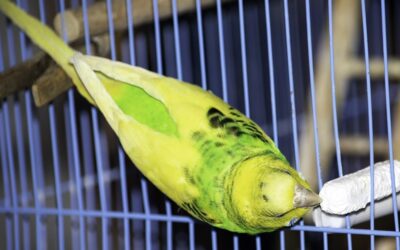Are you dreaming of cuddling up with a fluffy friend, but sneezing and watery eyes keep getting in the way? Hypoallergenic dogs might just be the perfect solution for you.
This blog post will guide you through the world of hypoallergenic dog breeds, helping you find a loyal companion without the allergy woes.

What Are Hypoallergenic Dogs?
The term “hypoallergenic dogs” refers to breeds that produce fewer allergens than others. While no dog is completely allergen-free, these breeds are less likely to trigger allergic reactions in sensitive individuals.
Common misconceptions often lead people to believe that there are truly hypoallergenic dogs that don’t shed or produce dander – but that’s not entirely true. They simply have traits that reduce the amount of allergens they spread.

Common Misconceptions About Hypoallergenic Breeds
Many believe that hypoallergenic dogs don’t shed. While some breeds do shed less, it’s not the lack of shedding that makes a dog hypoallergenic.
It’s actually the lower levels of dander, dog saliva proteins, and urine proteins that make a difference.
Another misconception is that hairless dogs are automatically hypoallergenic. Hairless breeds like the American Hairless Terrier do produce fewer allergens, but not all hairless dogs are suitable for allergy sufferers.
Top Hypoallergenic Dog Breeds
If you or a loved one suffer from allergies but have a heart set on owning a dog, you’re in luck.
Hypoallergenic dog breeds are less likely to produce allergens and can make wonderful companions. Here’s a closer look at some of the best hypoallergenic dogs:
1. Poodle
Poodles are well-known for their intelligence and hypoallergenic qualities. Available in three sizes—standard, miniature, and toy—they have a curly, non-shedding coat that needs regular grooming.
2. Portuguese Water Dog
Portuguese Water Dogs are medium-sized and very energetic, making them excellent pets for active families. Their curly coat is low shedders and minimizes pet dander.
3. Basenji
Known as the “barkless dog,” Basenjis have short, fine hair that produces fewer allergens. They are highly energetic and love exercise.
4. Maltese
Maltese are small dogs known for their long, flowy white pet hair. Their coat doesn’t shed much, but they do require regular grooming to manage the tangles.
5. Cairn Terrier
Cairn Terriers are small with a weather-resistant double coat that sheds minimally. They are playful and make excellent family pets.
6. Havanese
Havanese dogs have a long, silky coat that doesn’t shed much, making them suitable for those with allergies. They are known for their friendly and affectionate nature.
7. Schnauzer
Schnauzers, including miniatures, standards, and giants, are known for their low-shedding wiry coats. They are protective, loyal, and come in three sizes to fit different living situations.
8. Wheaten Terrier
Soft-Coated Wheaten Terriers are medium-sized dogs with a silky coat that sheds minimally. They are known for their playful and affectionate nature.
9. Labradoodle
A mix between a Labrador Retriever and a Poodle, Labradoodles often inherit the hypoallergenic qualities of the Poodle. They are highly trainable and make great family pets.
10. Samoyed
These large hypoallergenic dogs while larger in size, Samoyeds have a hypoallergenic coat that sheds less dander. They are friendly and known for their fluffy, white appearance.
11. Xoloitzcuintli
Also known as the Mexican Hairless Dog, Xoloitzcuintlis are available in three sizes and two varieties: hairless and coated. The hairless variety is ideal for allergy sufferers.
Each of these breeds has its unique characteristics and care requirements. When choosing a hypoallergenic dog, consider not just their hypoallergenic qualities but also their personality and activity levels to ensure they’re a good fit for your lifestyle.
What Causes Pet Allergies?
Pet allergies are caused by proteins found in a dog’s skin cells, urine, and saliva.
When these proteins are released into the environment, they can trigger allergic reactions in sensitive individuals.
Symptoms can range from mild to severe and can include sneezing, runny nose, itchy eyes, and skin rashes.
Common Symptoms of Dog Allergies
Allergy sufferers often experience a variety of symptoms when exposed to pet allergens. These can include sneezing, coughing, wheezing, nasal congestion, and itchy, watery eyes.
In more severe cases, exposure to pet allergens can trigger asthma attacks and other respiratory issues. It’s important to monitor your symptoms and consult with a healthcare professional if you suspect you have a pet allergy.
How Allergies Vary Among Dog Breeds
Not all dog breeds produce the same level of allergens. Some breeds, like the Shih Tzu and Coton de Tulear, have coats that produce less dander and shed minimally.
Others, like the Irish Water Spaniel and Lagotto Romagnolo, have dense coats that trap dander and reduce its spread.
Understanding how different breeds affect allergies can help you make an informed decision when choosing a pet.
Best Practices for Allergy Sufferers
When selecting a hypoallergenic dog, consider breeds that have low-shedding coats, produce less dander, and require regular grooming.
The Miniature Poodle and Bedlington Terrier are great examples of breeds that fit these criteria. It’s also helpful to spend time with the breed before making a decision to see how your body reacts.
Grooming Habits to Reduce Allergens
Regular grooming is essential for reducing allergens in your home. Brushing your dog frequently can help remove loose hair and dander.
Bathing your dog with hypoallergenic shampoos can also reduce dander levels.
Consider professional grooming services for breeds with dense or curly coats, like the Giant Schnauzer and Portuguese Water Dogs, to keep allergens at bay.
Creating an Allergy-Friendly Home Environment
To create an allergy-friendly home, invest in high-quality air purifiers with HEPA filters to remove airborne allergens.
Regularly clean your home, especially carpets and upholstery, to reduce dander buildup. Designate pet-free zones, like bedrooms, to minimize exposure.
Washing your hands after handling your dog and using allergen-proof bedding can also help manage symptoms.

Health and Care of Hypoallergenic Dogs
Hypoallergenic dog breeds may have specific health considerations.
For instance, the Afghan Hound is prone to hip dysplasia, while the Bichon Frise can suffer from skin allergies.
Regular veterinary checkups and a balanced diet tailored to your dog’s breed and size are crucial for maintaining their health.
Dietary Needs for Hypoallergenic Breeds
A balanced diet is essential for the overall health of hypoallergenic breeds.
High-quality dog food that meets the nutritional requirements of your dog’s age, size, and activity level is important.
Some breeds may have specific dietary needs, such as the Coton de Tulear, which benefits from a diet rich in omega-3 fatty acids for healthy skin and coat.
Exercise Requirements and Common Health Issues
Hypoallergenic breeds vary in their exercise needs. For example, the Yorkie loves short walks and indoor play, while the Lagotto Romagnolo requires vigorous physical activity.
Common health issues among these breeds include dental problems in small dogs like the Toy Poodle and joint issues in larger breeds like the Irish Water Spaniel.
Regular exercise, mental stimulation, and routine veterinary care can help prevent these issues.
Real Stories from Allergy Sufferers
Many allergy sufferers have found relief and joy in owning hypoallergenic dogs. For instance, Sarah, a lifelong allergy sufferer, found her perfect match in a Soft Coated Wheaten Terrier. She shares how this affectionate breed has brought immense joy to her life without triggering her allergies.
Emotional and Health Benefits
Owning a hypoallergenic breed can provide significant emotional and health benefits. Pet owners often report reduced stress levels, improved mental health, and increased physical activity. The companionship of a hypoallergenic dog, like the affectionate Shih Tzu, can be incredibly rewarding for allergy sufferers.
Success Stories and Testimonials
Numerous success stories highlight the positive impact hypoallergenic dogs can have on allergy sufferers. John, who struggled with severe allergies, found solace in a Bichon Frise. He explains how this breed’s minimal shedding and low dander production have allowed him to enjoy the companionship of a dog without compromising his health.

Choosing a hypoallergenic dog requires careful consideration of your allergies and the specific traits of different breeds.
Understanding the causes of pet allergies, selecting the right breed, maintaining regular grooming habits, and creating an allergy-friendly environment are crucial steps for allergy sufferers.
The Joys of Owning a Hypoallergenic Dog
Owning a hypoallergenic dog can bring immense joy and companionship to your life. These breeds offer the perfect balance of affection, intelligence, and reduced allergen production, making them ideal for allergy sufferers.
Whether you choose a Portuguese Water Dog, a Yorkshire Terrier, or a Giant Schnauzer, the rewards of having a loyal companion by your side are immeasurable.
Take the Next Step
If you’re ready to welcome a hypoallergenic dog into your home, do thorough research and consider consulting with a veterinarian or an allergy specialist.
These experts can help you make an informed decision and ensure that your furry friend will be a perfect match for your lifestyle and health needs.
Start your journey to finding the best hypoallergenic dog for you and experience the joy of pet ownership without the sneezes and sniffles.

If you need dog supplies delivered to your door for your hypoallergenic fur baby, contact Kate’s K9 Pet Care Service!
Remember, the perfect companion is out there waiting for you – happy pet hunting!









